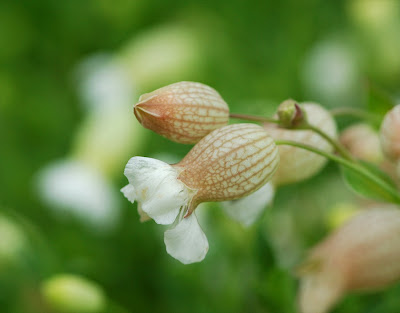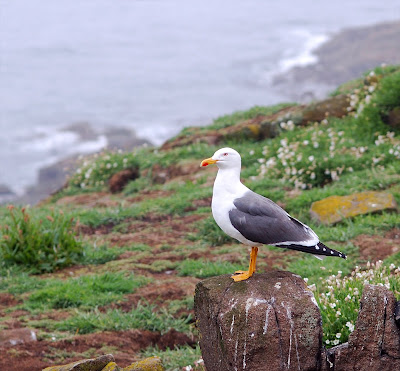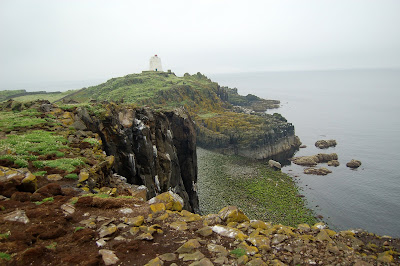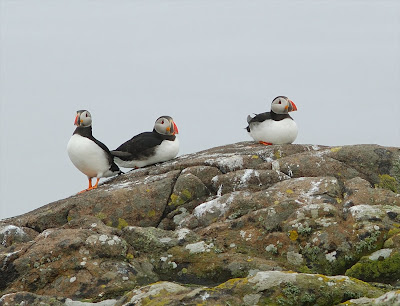This week I travelled with my dad to the Isle of May (in the Firth of Forth, East coast) to see the nesting puffins.
Dark guano-spattered cliffs towered slowly towards us through thick mist and the whirring shadows of seabirds as we approached the isle of May, aboard the May Princess (sailing from Anstruther). As the boat neared the shore we could see grey seals (Halichoerus grypus) basking (including one melanistic individual).
As soon as we set foot on dry land we were warned about the zealous dive-bombing behaviour of the ground-nesting terns (Common and Arctic) and provided with long bamboo canes to wave above our heads (thereby drawing dagger-sharp beaks away from soft eyes/noses/faces....hopefully). The ferocity of angry terns is truly intimidating!
As soon as we set foot on dry land we were warned about the zealous dive-bombing behaviour of the ground-nesting terns (Common and Arctic) and provided with long bamboo canes to wave above our heads (thereby drawing dagger-sharp beaks away from soft eyes/noses/faces....hopefully). The ferocity of angry terns is truly intimidating!
 |
| Arctic Tern (Sterna paradisaea) at nest |
The island terrain is short turf potholed with rabbit warrens and puffin-burrows, with clumps of sea campion in varying shades of pinkish-cream. On every side the sheer cliff faces are populated with thousands of guillemots and kittiwakes with smaller numbers of razorbills and shags.
 |
| Sea Campion (Silene uniflora) |
 |
| Sea Campion (Silene uniflora) |
This was the first time I had seen puffins and I was surprised at how small they are! They seem to spend alot of their time sitting about in groups 'Arrrr-ing' at each other.
 |
| Puffins (Fratercula arctica) |
A group of female eiders were marching about with a creche of fluffy brown youngsters in tow.
 |
| Eider (Somateria mollissima) female |
 |
| Nesting Kittiwakes (Rissa tridactyla) |
 |
| Razorbill (Alca torda) |
 |
| Razorbill (Alca torda) |
 |
| Razorbill (Alca torda) |
Guillemots don't attempt to make any kind of nest, their eggs are simply laid on bare rock ledges and the eggs have a conical shape (pointed at one end) which helps to prevent them from rolling off the edge (they roll in a circle instead).
 |
| Nesting guillemots (Uria aalge) |
 |
| Nesting guillemots (Uria aalge) |
 |
| Nesting guillemots (Uria aalge) |
 |
| Lesser Black-backed Gull (Larus fuscus) |










No comments:
Post a Comment